Mass transport in plants
1/46
There's no tags or description
Looks like no tags are added yet.
Name | Mastery | Learn | Test | Matching | Spaced |
|---|
No study sessions yet.
47 Terms
What does the xylem transport?
water and minerals from roots to leaves
What does phloem transport?
organic substances such as sugars
What is the vascular bundle?
xylem and phloem together
What is the vascular bundle also known as?
the stele
What is the vascular bundle surrounded by?
a layer of cells called the Endodermis
How is a vascular bundle arranged?
Xylem vessels in the centre with phloem vessels around the xylem
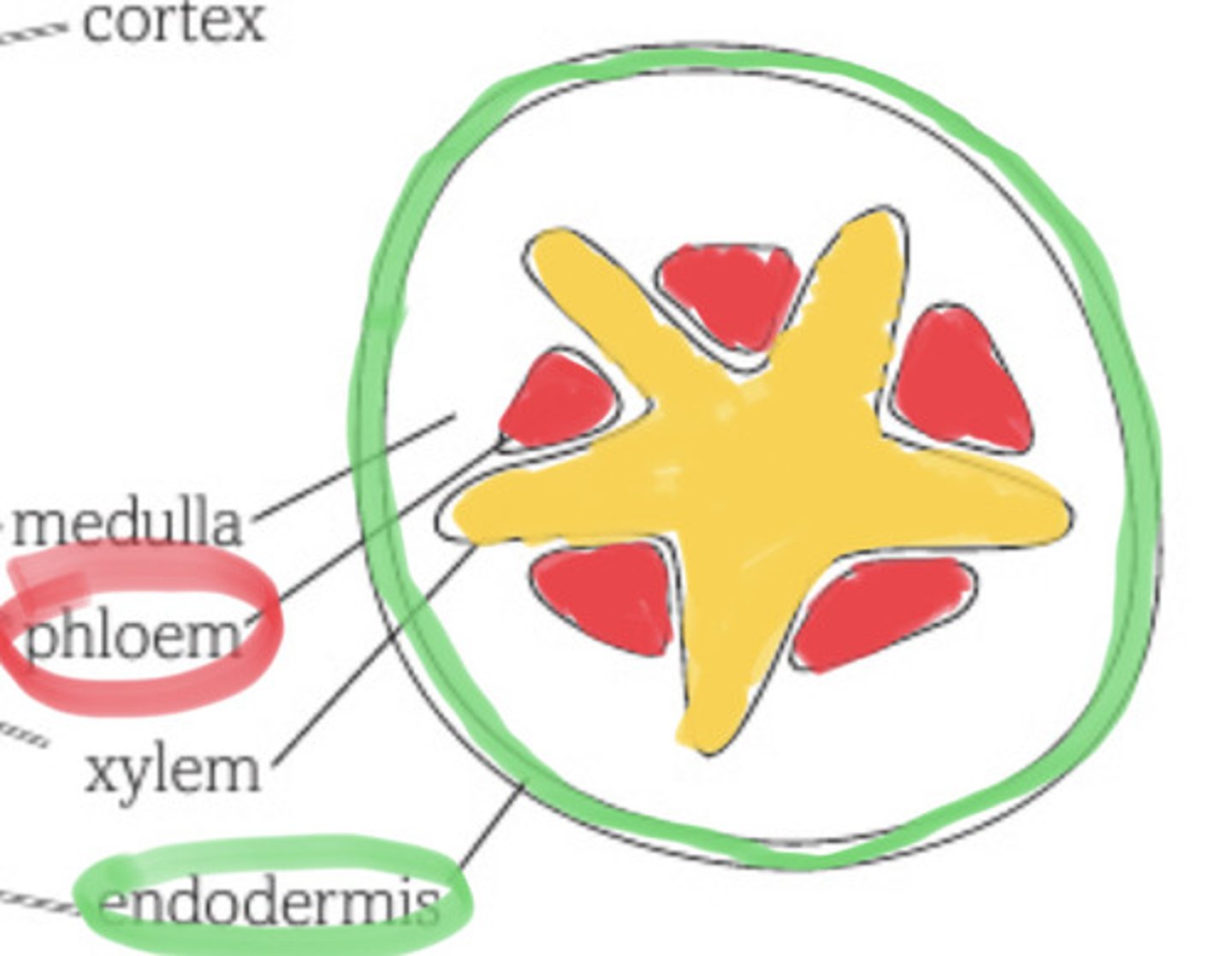
What are xylem vessels?
non living hollow tubes
What is the function of lignin?
Strengthening and waterproofing xylem tissue
What is transpiration?
The loss of water vapor through the stomata of leaves.
Why do the internal leaf spaces have a high concentration of water vapour?
The surface of the cells in the leaf are covered with a thin layer of water - this water evaporates from the surface of the cells
What happens when stomata open?
Water vapor is lost to the external environment, increasing the rate of transpiration.
What is the transpiration stream?
The movement of water from the roots through the xylem and out of the leaves
What is the cohesion-tension theory?
Water molecules stick to one another + to walls of xylem forming a water column
What is cohesion?
Attraction between molecules of the same substance
What is adhesion?
An attraction between molecules of different substances
What is one effect of cohesion and adhesion?
Water can move up very thin tubes against the force of gravity - referred to as capillary action
What is transpiration pull?
Water is drawn up the xylem to replace water lost by evaporation
What factors affect the rate of transpiration in plants?
- light intensity
- humidity
- temperature
- movement of the air
How does light intensity affect the rate of transpiration?
Transpiration only takes place when stomata is open, which is only in light conditions
How does increasing light intensity increase the rate of transpiration?
Increases the number of open stomata, allowing more water to diffuse out of the leaf
How does humidity affect the rate of transpiration?
Water diffuses out of the leaf down the concentration gradient - humidity affects steepness of gradient
How does higher temperature increase the rate of transpiration?
At higher temps water molecules have more kinetic energy - greater rate of evaporation of water from the internal surfaces of the leaf
- decreases relative humidity
How does movement of air increase rate of transpiration?
Winds stop water vapour building up outside leaf
What are assimilates?
the products of photosynthesis that are transported
What is translocation?
The movement of sugars through a plant in phloem
What are sources?
plant organs such as leaves that produce sugars
What are sinks?
where sugars are used or stored
What happens at the source of the phloem?
Sucrose is loaded onto the phloem by an active process
What happens at the cell membrane of a phloem companion cell?
Active transport of H+ ions out of cytoplasm to create concentration gradient outside cell membrane. H+ ions co transported back into cell with sucrose.
How are companion cells adapted for active loading?
- Have a large number of mitochondria to provide ATP needed for active transport of hydrogen ions
- Foldings on cell membrane increase surface area for proteins involved
What happens to sucrose once in the companion cells?
Sucrose can now diffuse through plasmodesmata into sieve tube element cells - lowers water potential inside the sieve tube element
What happens to sieve tube element once sucrose enters?
Water potential lowered - Water moves in by osmosis from xylem - increases hydrostatic pressure in sieve tube element
What happens once hydrostatic pressure is increased in sieve tube element?
Phloem sap moves up or down sieve tube element towards the sink
What is the bulk movement of phloem sap called?
mass flow
What happens at the sink?
Sucrose moves out of sieve tube element and is converted to glucose for use in respiration or starch for storage
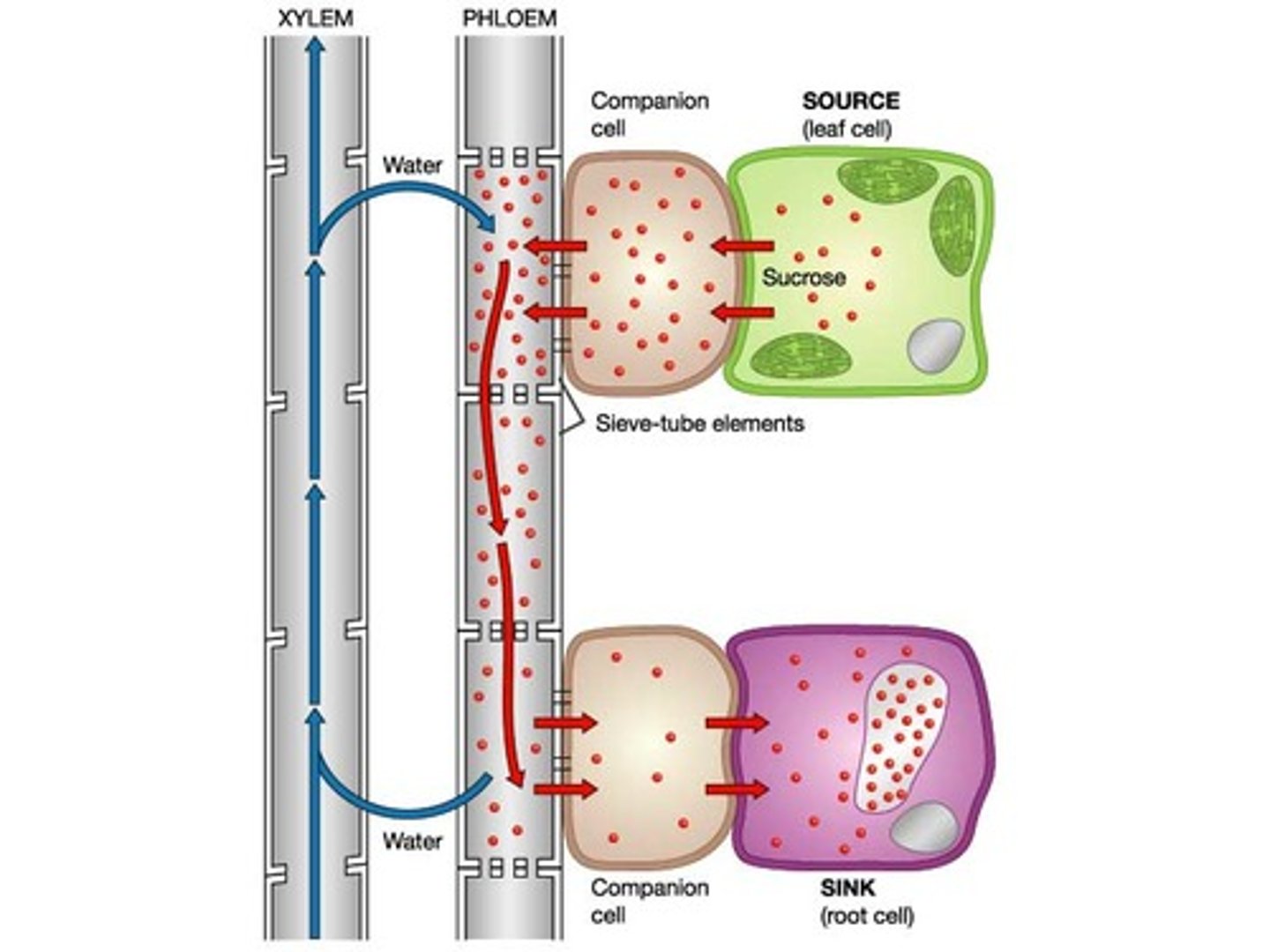
What happens once sucrose leaves the sieve tube element?
Increases water potential in sieve tube element causing water to move out by osmosis
What evidence supports mass flow?
- Rate of flow of sucrose is much faster than could take place by diffusion alone
- If we inhibit companion cell mitochondria, translocation would stop
- Concentration of sucrose in cells is higher in leaves (source) than roots (sink)
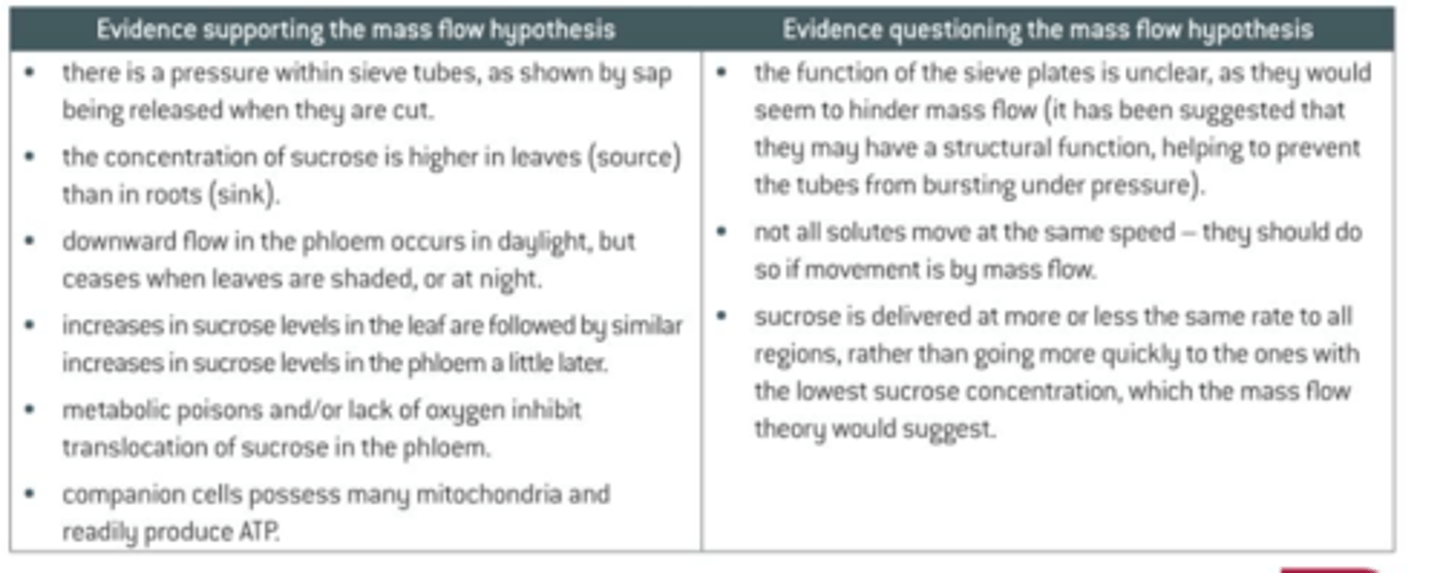
What evidence is against mass flow hypothesis?
- Structure of the sieve plates appear to hinder mass flow
- Not all solutes move at the same speed, they should do if it is mass flow.
- Sucrose is delivered at more or less the same rate to all regions, rather than going more quickly to the ones with the lowest sucrose concentration
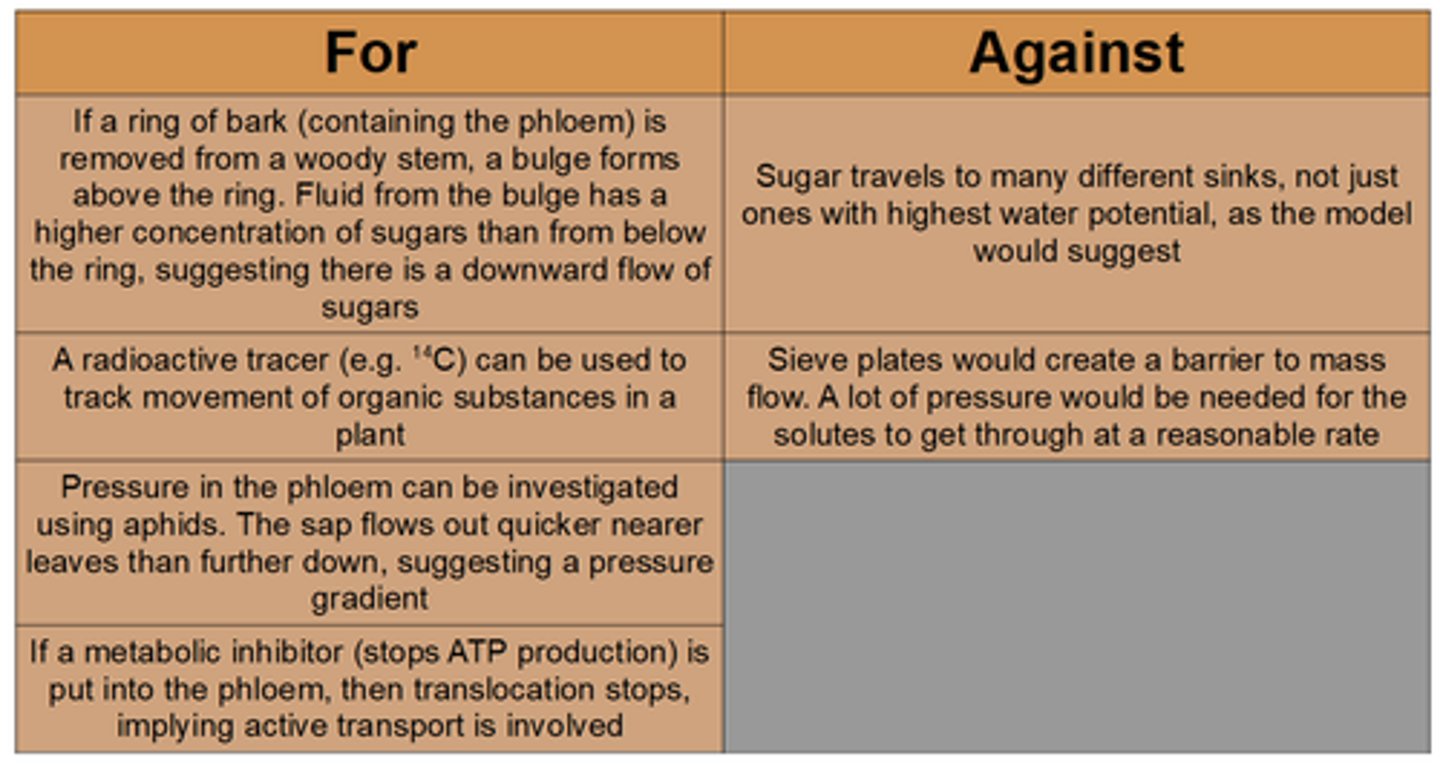
Describe the mass flow hypothesis for the mechanism of translocation in plants. (4)
- In source sugars actively transported into phloem
- By companion cells
- Lowers water potential of sieve cell and water enters by osmosis
- Increase in pressure causes mass movement towards sink
- Sugars used
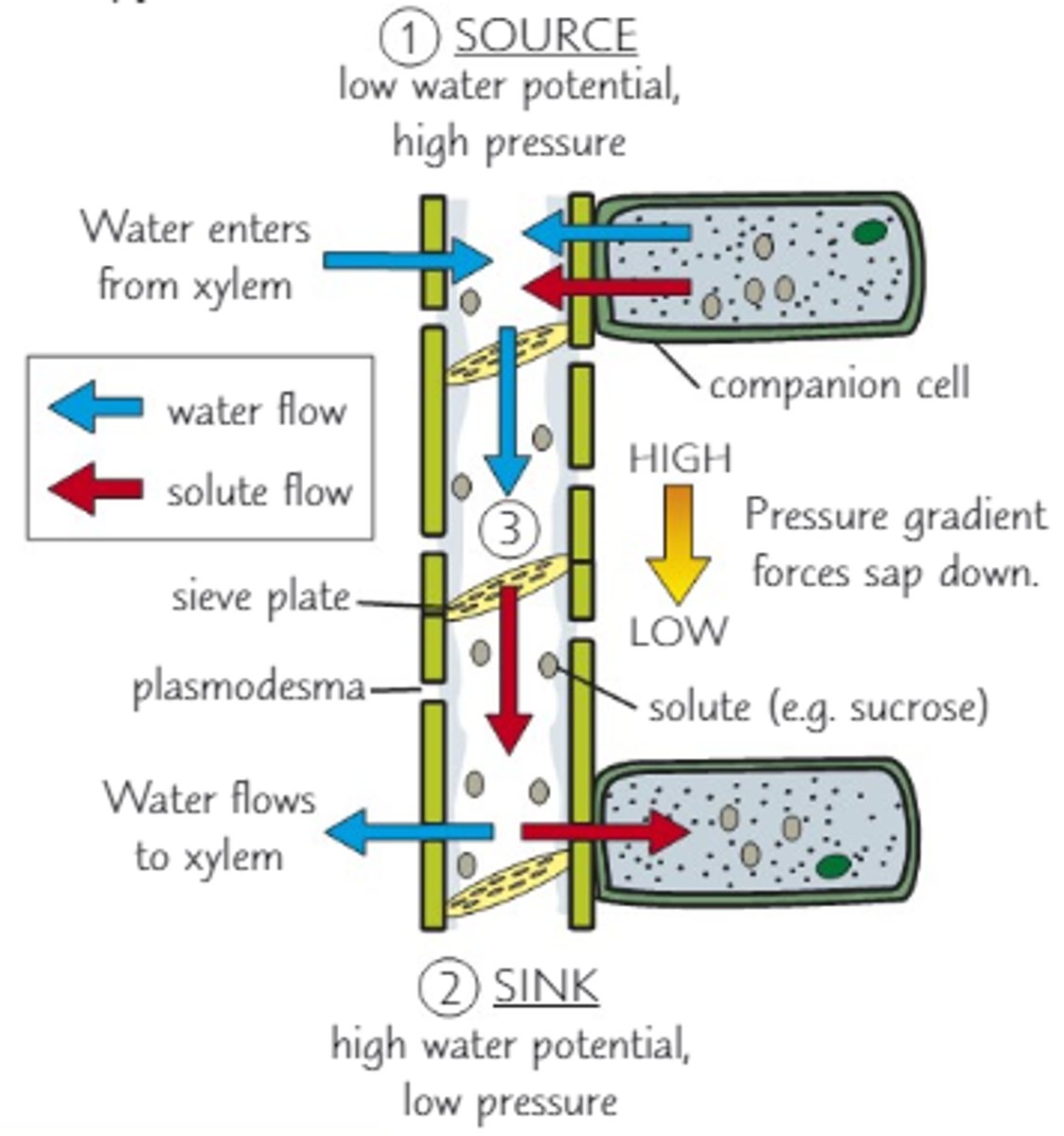
Describe the cohesion-tension theory of water transport in the xylem. (5)
- Water lost from leaf because of transpiration
- Lowers WP of mesophyll cells
- Water pulled up xylem creating tension
- Water molecules cohere by hydrogen bonds
- forming continuous water column
- Adhesion of water molecules to walls of xylem
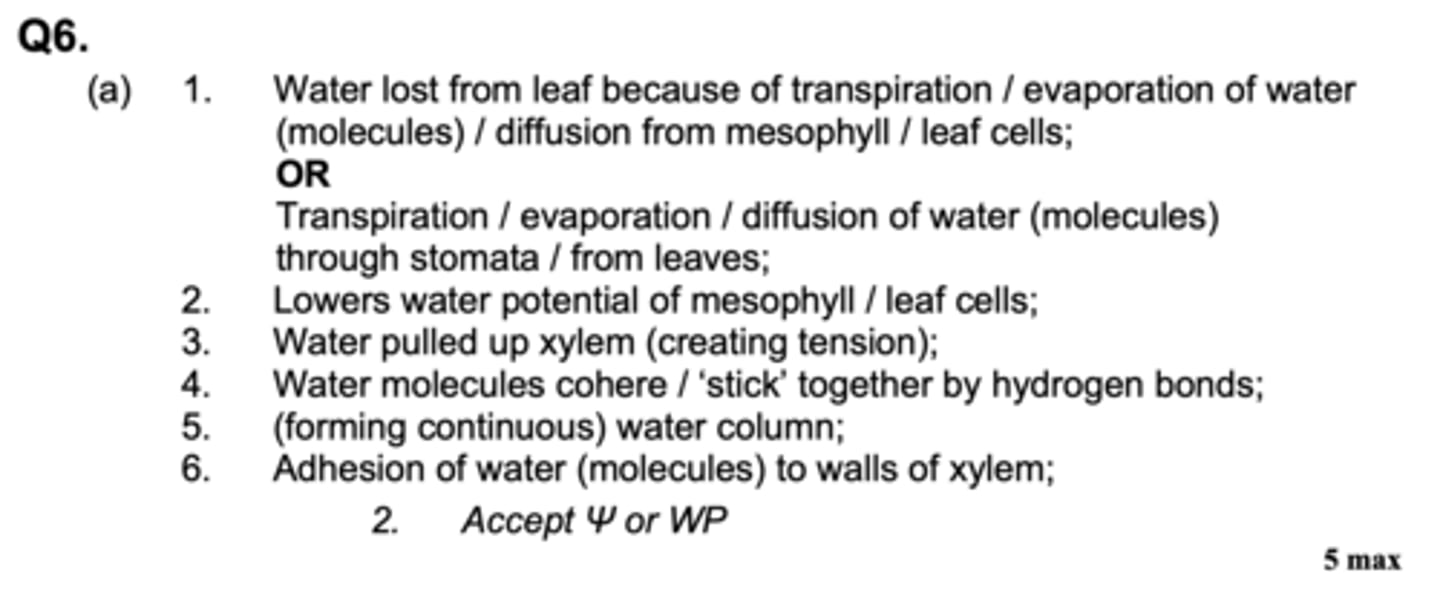
What does the ringing experiment consist of?
Bark and phloem of a tree are removed leaving just the xylem in the centre.
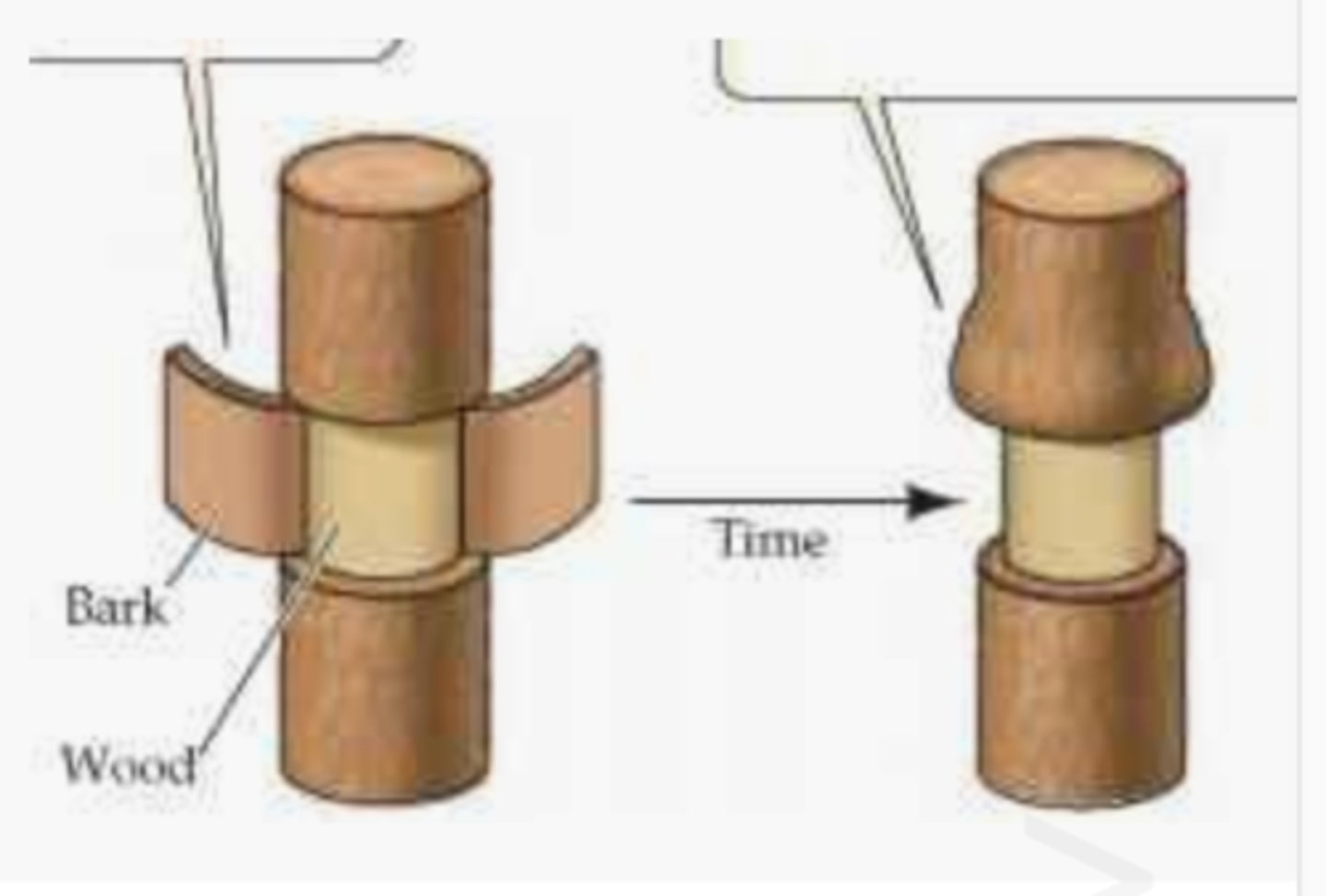
What is the result of the ringing experiment?
Overtime the tissues above the missing ring swell with sucrose solution and the tissue below dies.
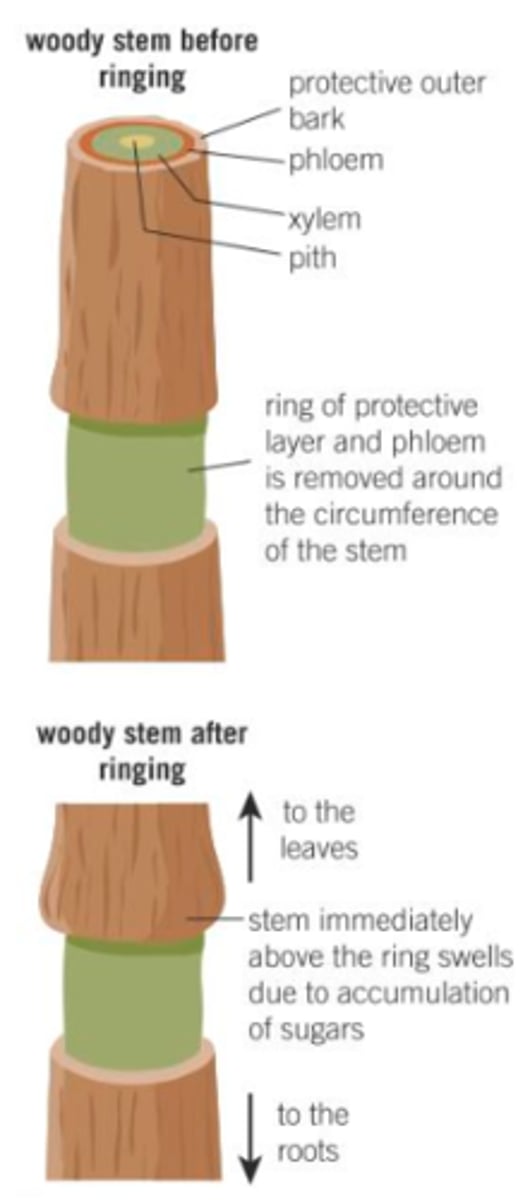
What does the ringing experiment show?
Shows that sucrose is transported in the phloem.
What happens in the tracer experiment?
Plants are grown in a environment that contains radioactive CO2 which is incorporated into the sugar produced in photosynthesis.
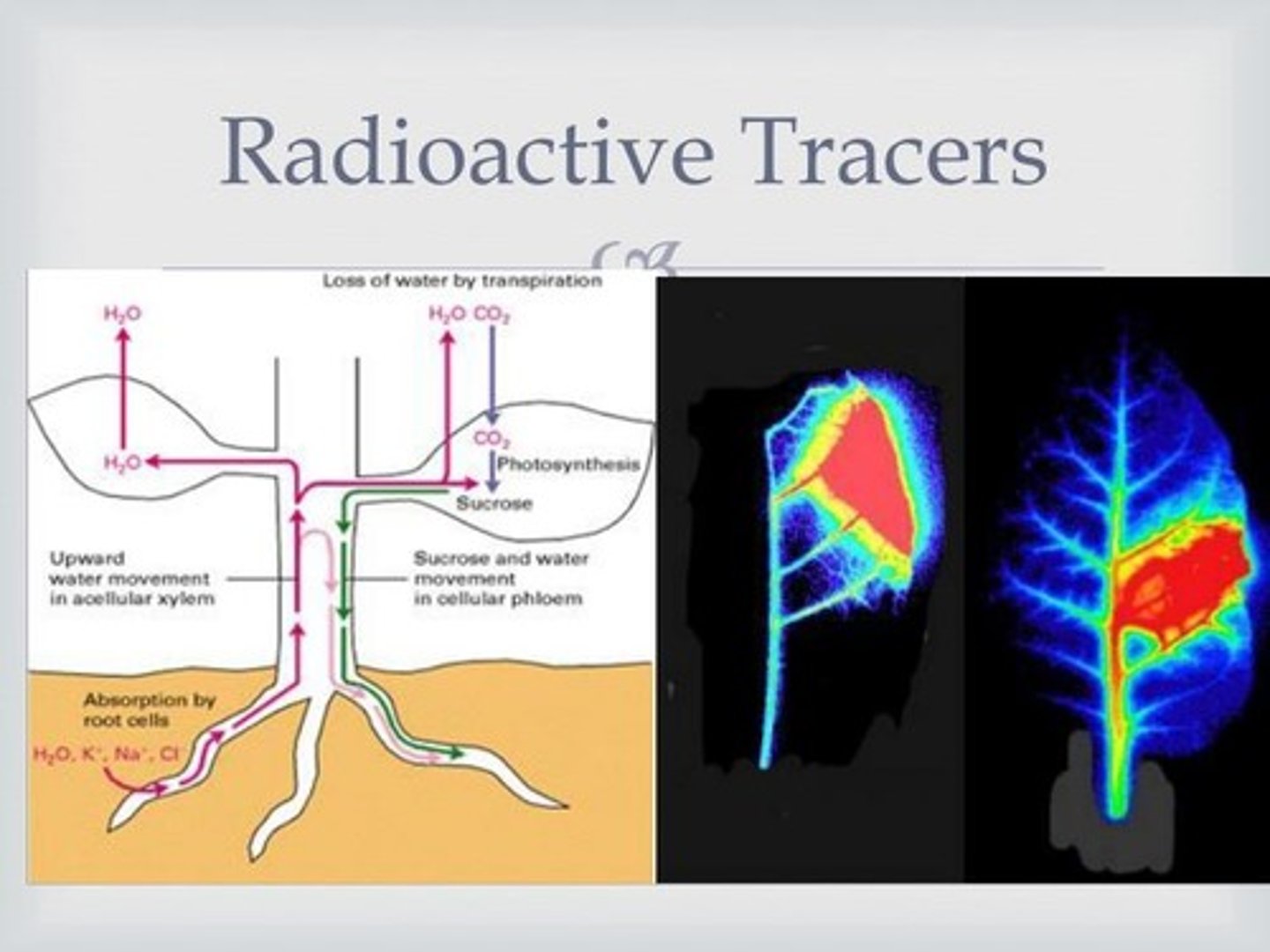
How is the movement of the radioactive sugars traced?
using autoradiography
What is the result of the tracing experiment?
The areas that have been exposed to the radiation produced by the 14C in the sugars will appear black.
What can we conclude from the tracer experiment?
The black areas correspond to where the phloem is and therefore suggest that this is where the sugars are transported.